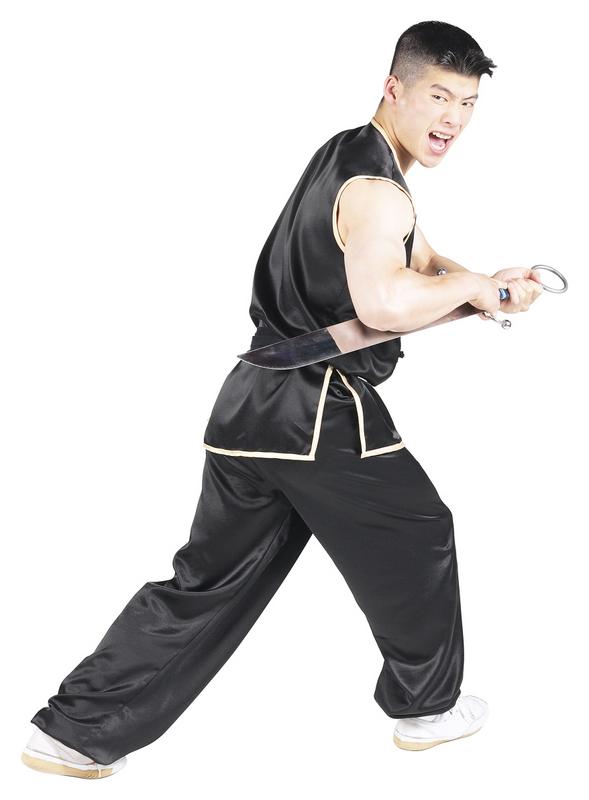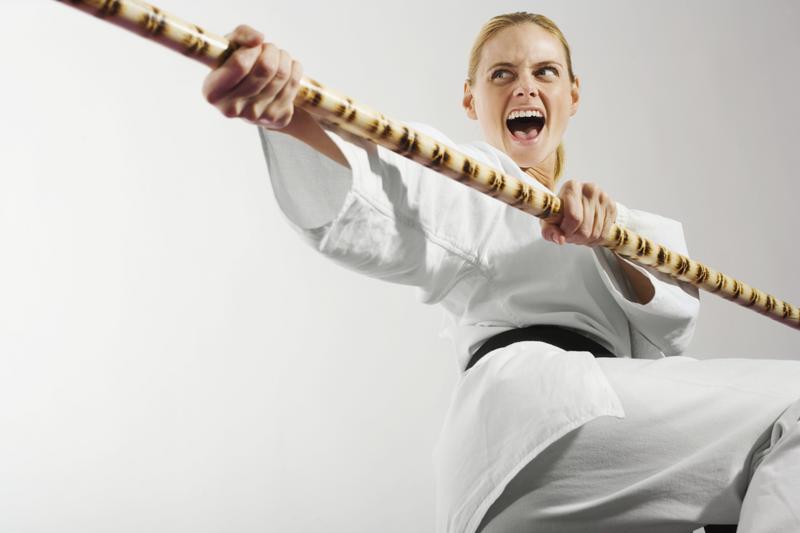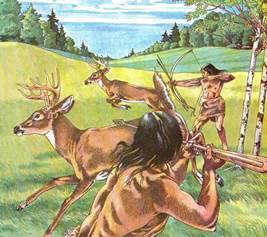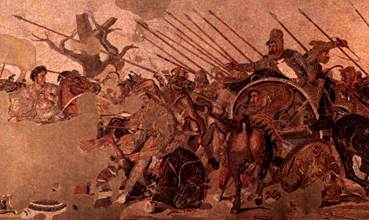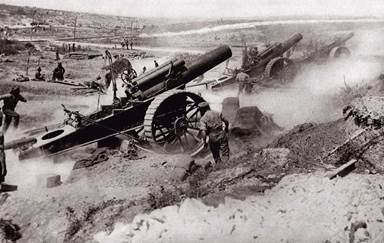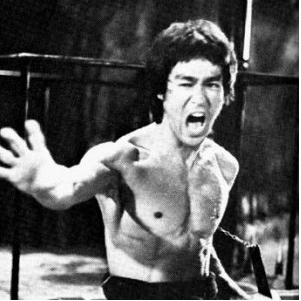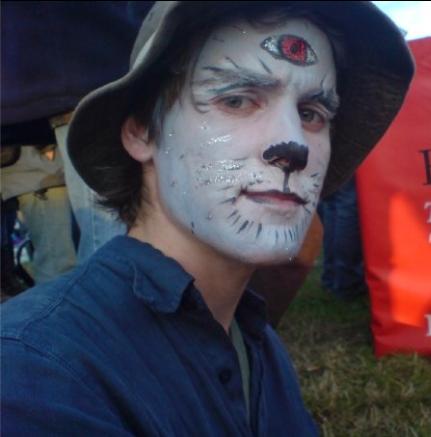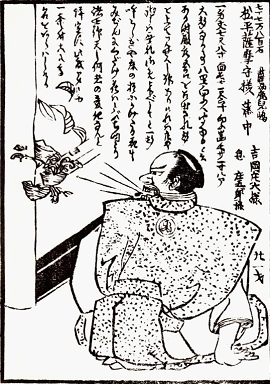Jeannie A is a slightly eccentric typical tea drinking and biscuit munching Brit, who listens to a lot of rock music. She has a PhD in modern and contemporary British social and cultural history and is an ex-University lecturer. Jeannie is a writer in the broad sense of the word; researching and writing website copy, blogs and articles for a wide range of websites and magazines. Her favourite authors include Stephen King, Mark Billingham, Wilkie Collins, Tana French and Susan Fletcher. Under her pseudonym Jeannie has written a number of horror and short erotic stories. She is currently working on her first novel, which seems to involve a large number of trees. In her spare time Jeannie is a soup maker extraordinaire who likes to listen to the voices in her head, engage in tribal dancing and belly dancing and spend time with her husband and dogs. Jeannie can be found on Facebook https://www.facebook.com/pages/The-Writers-Barn/390815607656543 and on her website at http://www.thewritersbarn.org.
A Brief History of the Kiai
The Kiai, loosely translated from Japanese to ‘energetic yell’ is the term martial artists use to refer to the vocalisations made by martial artists while exhaling, often before or during a strike or other movement.
Often represented in western languages as a “hy-ah” sound or similar, the traditional Kiai has infiltrated popular culture the world over. The Kiai is a facet of martial arts that is sometimes misinterpreted as simply convention or perhaps even a natural consequence of highly energetic fighting techniques. In actuality, however, the Kiai are an intrinsic part of the movements they accompany and, to a trained ear, may be judged on their own merit.
In Kendo, for example, a point will only be awarded for a successful hit if it is delivered with an adequate Kiai. A similar system is employed in Polearmball, with points being awarded for a Polearmist’s (player in possession of the Polearm used in the game) execution of Kiai. The Polearmist’s Kiai abilities is taken into account along with the degree of showmanship he or she exhibits.
Nature vs. Nurture
It is important to realise that the history of the Kiai is a nebulous concept and the inception of the practice predates even the most ancient of fighting arts. Variations and analogues of the Kiai have evolved throughout the history of humankind, and perhaps in some respects, even further back.
A little grounding in current theories of linguistic evolution is immensely helpful in understanding the role of Kiai in modern uses. Ever a controversial subject, papers on the evolution of language (or glottogony) were famously banned from the prestigious Société de Linguistique de Paris in 1866. It is only relatively recently that sufficient evidence and sufficiently advanced research techniques have rendered the subject worthwhile for further investigation.
In 1861, prior to the effective prohibition of research on the subject, Max Müller put forth several speculative theories that have helped to provide a framework for much of the contemporary work on the subject. The ‘Bow-wow’ theory of language evolution posits that spoken language came initially from human imitation of animal calls. The ‘pooh-pooh’ theory describes the origin of spoken language as an emotional interjection – cries of surprise, pain, joy etc. Whilst roundly dismissed in their pure forms by current scholars, both of these theories hint at more accepted ideas that bear specific relevance to the Kiai.
The ‘bow-wow’ theory of linguistic evolution may not offer a probable scenario for the birth of modern languages but it does at least suggest a closer link between biological and linguistic evolution. A parallel between the theory of the emergence of modern humans from the animal kingdom and the theory of emergence of what many consider to be the defining trait of humanity – language. Many modern theories of glottogony posit that human language is an adaptation from animal calls of our distant primate relatives.
The innate, or instinctive nature of early human language suggested by the above hypothesis is echoed in the ‘pooh-pooh’ theory and more modern derivatives of it. The idea is essentially that early language was formed not as a functional lexical-grammatical system but as a collection of mutually intelligible syllables – much as animal calls are instinctively understood and reproduced in other species.
Now let’s consider this with respect to the Kiai – could it be that these utterances, codified and culturally transmitted as they have been by centuries of tradition, actually have their roots deep in the human subconscious? Perhaps this is the basis for not only the widespread nature of the Kiai and similar phenomena but also the reason that a simple yell – which inflicts no physical damage – can be such an effective weapon against an opponent in fighting arts.
There is evidence to indicate that this may be the case – at least partially. When studying communication at the intersection of linguistics, biology, neuroscience and myriad other disciplines there are two key groups of people that are commonly observed. The first are the language impaired – researchers can better understand how language works by observing the ways in which it sometimes does not work. The second group consists of babies and very young children.
It is this second group that is of particular relevance to our understanding of the Kiai. During the first years of life, a developmentally healthy child will, in the right circumstances, acquire one or more languages. The exact nature of this process is the subject of fierce debate but it is generally accepted that the human brain has developed systems that allow for such an acquisition almost automatically. It is wrong however, to presume that all human communication arises through such a process.
From the very moment of birth, any bystander will attest to the fact that human infants are communicating with the outside world – kicking and screaming may be harder to interpret than spoken English, but clearly they transmit some degree of meaning from the mind of the screaming infant to the minds of anyone unfortunate enough to be within earshot. If non-lexical exclamations such as this can elicit a response from a parent or caregiver from the very beginning, it stands to reason that the human mind is capable of transferring meaning on a much deeper and more basic level than via learned language or gesture.
It could be argued that this deeper, innate level of understanding is precisely the system that is exploited by those with a masterful command of the Kiai. And the cries of a martial artist audibly have much in common with the instinctive exclamations of extreme emotion that most humans are capable of from a very young age.
For a perfect example, one must look no further than the video of a recent performance by martial artist Dayna Huor shown above... Dayna's Kiai forms an integral part of her routine, and were there a physical opponent and the possibility of a physical confrontation, there can be little doubt that such energetic, loud and ferocious battle cries would resonate strongly and prompt said opponent to reconsider their chances. Such a reaction, it can be argued, is no more voluntary than the tendency to blink in the presence of a bright light.
The Basic Principles of Kiai in Action
Of course, the usefulness of paralinguistic verbal intimidation has not gone unnoticed outside the sphere of fighting arts. Perhaps the most obvious implementations of Kiai-like techniques are immortalised in the famous actual battle-cries of warriors throughout history. Examples range from the “alala” of Athenian troops to the rebel yell of the Confederate soldiers during the American Civil War.
Parallels may be drawn at this point to the modern technique of shelling an enemy into submission – round-the-clock bombardment of an opposing force with the aim of extracting a surrender, not necessarily delivering total annihilation. This seems (thus far) to be the logical limit of military application of the principles of Kiai; however aspects of civilian life have been infiltrated by strikingly similar concepts, not least in the realm of non-combat sports.
Olympic weightlifting is a sport that may not share much with martial arts or warfare at first glance, but noise is certainly an advantage at the disposal of top competitors. In a sport characterized by mental toughness as much as physical strength, long periods of waiting can leave athletes vulnerable to attempts to throw off their ‘inner game’. Most of us will be familiar with the idea that exerting maximum physical effort may result in a certain amount of grunting and audible exhalation. Top weightlifting competitors are drilled in breathing technique that is essentially a refinement of this natural tendency – a conscious optimization of an innate reflex. What is interesting to note though is just how loud competitors at these events can be – during and after each lift.
Conscious exaggeration of natural vocalizations like those described above are also becoming commonplace in the sport of tennis. The soundtrack of grunts accompanying top-level matches was once the subject of seemingly endless media attention, but in recent years it has become very much a part of the game. Whilst restraint is often encouraged, the history of complaints made against ‘excessively’ noisy players serves to highlight the fact that these sounds are seen as advantageous, at least by the opposition.
When it comes to vocal intimidation of an opponent, however, few spectacles live up to the Haka.
The All Blacks, New Zealand’s rugby team, face their opposing numbers and perform this fearsome routine prior to each match.
Haka routines consist of aggressive movements accompanied by rhythmic chanting, with the overall spectacle not dissimilar to a synchronised martial arts display. Originally a traditional war cry of the native Maori people, the Haka has been adopted almost wholesale by the national rugby team and made famous the world over. One need only glance at the All Blacks’ impressive track record over the past decades to conclude that there may be a very real benefit to this strategy.
The Integration of Kiai with Polearmball
And so, perhaps the latest development in the history of the human voice as a weapon is the inclusion of Kiai as an integral part of the game of Polearmball. The three preceding examples are of sports in which Kiai-like elements have been introduced some time after the rules have been established. The Kiai, in each case, represents a concrete advantage when used well. Polearmball simply accounts for such an advantage within its very scoring system, thus legitimising the Kiai very much in the tradition of the martial arts that have inspired its inclusion.
A Brief History of the Kiai (Yell)
Written by Sam Taylor
Sam Taylor
Sam Taylor is the Author Of This Article
Sam is a freelance copywriter, living in the south of England. After completing a bachelor’s degree in linguistics he worked as a web marketing consultant before choosing to specialize in copywriting. Before choosing to go it alone as a freelancer, Sam learned his trade with a top British marketing agency, creating compelling content for global brands and local start-ups alike.
Sam now writes primarily for small organizations on the projects that interest him most. He devotes most of the time to writing and playing music with his bands.
Kiai! A journey
Written by Terry Houlding
Primal Scream!
Bright eyes gleamed as the young jaguar ceased its stealthy pace through the dappled forest; its focus now entirely on the sounds of its prey. Monkeys, some distance yet, in a clearing and unaware of the imminent danger they faced. Birdsong slowly diminished as the smaller denizens sought to avoid becoming an easy meal, despite the safety that flight offered them.
The Jaguar coiled and sprang into a fast lope. As it neared its meal, it roared , knowing that the younger, weaker ones would be paralysed with fear. It spotted one that had frozen petrified, its mother failing to coax her offspring to safety. Before the jaguar could close for the kill, the mother stood in front of her child and screamed at the jaguar.
The young predator had never been challenged before and paused. Other monkeys began howling at the jaguar, disorienting him and causing him to roar in frustration. The mother screamed again and advanced on the predator many times her size and strength, causing the jaguar to flinch, hissing, but beginning to back away from this new threat. It turned and ran as the primal scream of the monkeys reverberated through the forest.
The Hunter’s Song
His soft footfalls barely rustling the leaves, Atuk crept through the damp forest, listening for the signals of his tribe who were spread around him, blurred by the mist. A soft warble sounded to his left. Once, twice… a pause… three times. The fresh tracks of a deer had been found. More warbles and trills followed as the tribe shifted their advance to the prey. Atuk saw a shadow lope in the distance. He he lifted his spear and threw, followed a few seconds later by the sound of a wet thud and a bleat of the, now wounded, animal.
He shouted his success as the tribe picked up the pace to close on the wounded beast. A short chase and Atuk came across Juni, another adolescent like himself, raising his spear to finish the now exhausted deer. Atuk yelled at him, startling the would-be-stealer of Atuks rightful kill. Acknowledging Atuk, Juni displayed shame and backed off. Atuk took his knife and quickly slit the deer’s throat. An elder approached and showed Atuk how to remove the creature’s heart which Atuk did, his prize aloft. He quickly bit into it and, as blood drenched his face, he cried his joy and victory, accompanied by the joyous whoops of his tribe.
That evening, as the tribe feasted on Atuk’s kill, a soft thrumming started deep in the throat of the tribe leader and was quickly taken up by the rest, rising in rhythm and pitch. The women trilled like birds and the song developed to tell the story of Atuk’s transition to manhood. The celebration would have carried long into the night had it not been for the crack of thunder which shook the tribe out of their reverie and encouraged then to seek the safety of their shelters as the storm broke overhead.
Alalalalalai!
Alexander the Great’s army stood looking over the field of Gaugamela at the uncounted hordes of King Darius’ Persian army. His phalanxes stood solidly in the face of overwhelming numbers. Spears pounded the dirt in a rhythmic thud as they sang their battle hymns in unison. Alexander raised his sword and his army ceased its singing and marched towards the enemy, picking up its pace.
Darius’ cavalry and chariots were easily dealt with as the hoplites advanced to the enemy’s right. As the Persian line thinned, Alexander let out a battle cry, turned his army 90 degrees and charged towards the Persian ruler himself! As the phalanxes closed with the enemy infantry they let out their own ululating war cry, the Alagamo; Darius turned and fled, leading Alexander to secure his place in history as one of the greatest military rulers of all time!
Shell Shocked!
The pre-dawn sky slowly illuminated the trench that Private Jones and the rest of his squad occupied. Too tired and too nervous to sleep, he listened to the incessant pounding of the artillery guns which had started firing late last night and had continued throughout. He slowly became aware of a strange noise and it took him a few moments to realise that the guns had ceased their bombardment of the enemy’s positions.
Whistles sounded in the silence and men stirred as they donned their kit ready for the push. The plan was that the enemy would be softened by artillery through attrition, both physically and mentally before the infantry closed in to mop up the survivors. Jones briefly wondered whether the general who had devised this tactic was aware that the sound of the guns would be indiscriminate in their effect.
The whistles sounded again and Jones and the rest of his squad took position by the scaling ladders, ready to begin the assault. The 3rd whistle blew and the attack began.
The air overhead carried the shrieks of the machine gun bullets whizzing across the battlefield; mortar shells tore great chunks out of the ground, throwing them high into the air and showering clods back onto the battlefield. Jones squad closed on the enemy’s position and, with their bayonets fixed, stormed into the enemy trench.
A few metres off, an enemy soldier was reloading his rifle and taking aim at Jones. Jones yelled with all his might as he charged, succeeding in causing his opponent to fumble his weapon. Jones stabbed him and moved on to the next. He saw one of the enemy huddled in a corner rocking and seemingly oblivious to the fight that waged around him. Jones recognised the shell shock that the man was afflicted by. He knew members of his own unit who had suffered from it.
The bombardment had certainly worked on this one, Jones thought.
Kiai, The lesson
“Hai, Hai, Hai” yelled the students half-heartedly at the instruction to do so. Each ‘Hai’ was released with a punching fist to the front that the instructor had demonstrated. Master Li paused the class of beginners and, as they sat cross legged on the dojo floor, he addressed them,
“When you strike your opponent, it does not begin with the impact of your fist onto them. It begins from the centre of your body, from the abdomen here.” he said, pointing forcefully at his own stomach to emphasise the point. “From here your spirit, stronger than flesh, reside. It is with that you want to strike your enemy. For this to happen, you have to make a channel for that energy to travel. I will demonstrate”.
Master Li signalled one of the older students, his Uke, to demonstrate the attack.
Taking a fighting stance, feet shoulder width apart, knees slightly bent and closed fists tucked by his side, the student slowly punched with his right arm emitting a sharp “Hai”. Master Li spoke, “See here?” he said, pointing at the student’s left hip. “The hip twists and travels forward in unison with the strike. It locks with the extended punch to counterbalance and harden the strike, all parts of the body work together to strike, not just the arm. His Kiai is the manifestation of that energy.”
One of the students raised his hand, “Master Li, what is Kiai?”
Li dismissed the Uke and turned and yelled out a loud and short “Hai”, visibly startling the class who then laughed self consciously at their own reaction.
“That is Kiai” said Master Li. “It is the projection or manifestation of one’s spiritual energy or Chi. A concept brought to Japan from a buddhist monk from China in the 9th century. Ki is the Japanese word for Chi. Ai at its simplest means to join or to fuse” said Li interlocking his fingers together, “to harmonise. It is the harmonisation of a shout with the energy of the spirit which, like I just demonstrated, has an effect”.
“So you use it to scare an opponent?” one of the students asked.
"That is one of its functions” Master Li conceded. “It is by nature a primal thing and it can paralyze an opponent or distract them. It is also much more than just scaring your opponent. When I attack, my Kiai allows me to breathe properly and get much needed oxygen into my system, like a boxer when he grunts. It is too easy for a beginner to forget to breathe as he practises a move. When you win in a competition, what is your first urge?”
“To celebrate”, one of the students tentatively responded.
“Exactly!” Master Li affirmed with a chop of his hand. “We want to celebrate our victory; we want to shout for joy and that is another function of the Kiai. By expressing our victory at the completion of a move, we not only boost our own confidence, we show our opponent how confident we are, that we have succeeded. If he believes that we think we are victorious, then he must therefore concede that we believe we have or can defeat him and this will play on his mind. After all, what does the word ‘Hai’ mean in Japanese?” Master Li asked rhetorically and paused to let his words sink in.
“It is not all about offence though.”
He rose and signalled his Uke for a demonstration. Master Li launched a simple series of kicks and punches at his opponent, each punctuated by a sharp ‘Hai’, ‘Toh’ or ‘Yah’. His student counter-attacked in kind and Master Li backed off, blocking the strikes whilst yelling ‘Tah’ or ‘Yah’. The sequence ended, the two bowed and Master Li turned back to the students.
“Kiai is also about defence. Not only to attempt to disrupt their attack, but to focus your mind and body to deal with any blows he might land on you. For example, if you are already exhaling air with your Kiai, then it is less likely that you could be winded. Also, with each Kiai, your body tenses like I showed you with the punch earlier. This tension helps distribute the force of your opponent’s blow across the body and not in the one place.
Taking a stance, Master Li said, “Observe!”
He conducted a series of movements consisting of strikes and blocks that flowed in a sequence eventually returning to the start, this time using longer drawn out Kiai’s.
“That was the Kihon Kata. It is the first kata, the Japanese name for a sequence; that you will learn and be tested on for your first belt. The Kiai is also used to focus the mind and the body for longer moves like Katas and it will aid you in your execution of it”.
“Is the Kiai part of the test as well Master Li?”
“Although, as I said it will aid you in your kata, your Kiai is not part of the assessment. In some martial arts it is. In Kendo for instance, a point is only awarded for a hit if it is followed by a convincing Kiai”.
“Master Li, I’ve heard that in Polearmball, you get points for your Kiai?”
“You will find that the use of the Kiai is common in many sports. Mainly for distraction such as tennis when you hear Serena Williams’ famous yells!” (The class chuckled). In rugby at the start of a match, the New Zealand All Blacks team perform the Maori Haka, a tribal song/dance designed to intimidate their opponents in a show of strength.
There used to be a martial art, Kiai Jutsu, dedicated to just the use of the Kiai alone where it was said that masters of this could defeat opponents solely through the Kiai. However this is sadly a lost art to us now. So many of the stories of the feats that they were said to be capable of, such as knocking an opponent back with just their yell, will remain myth.
“Now that you understand the Kiai, make sure you focus on using it as much as any other part of your technique.”
Terry Houlding is the author of this article
is a freelance graphics designer, photographer and writer from Gloucester, UK. Having spent 10 years in the military, he sought to branch out from a rewarding career into a more creative direction. He lives with his wife, Natalie & daughter Ocean. They are preparing to emigrate to Australia to escape the terrible english weather and find a beach that is useful for more than just keeping the sea at bay. His website and work can be found here: www.nataliehoulding.com
The Kiai and The Battle Cry
by Ed Hingston
Long ago, a slight and weary old man arrived at a village seeking repairs to some of his equipment. Although the only craftsman in this area seemed little older than a lad, he was burly, and, noting his calloused hands and robust arms as he approached, the old traveler was assured of the young man's skill in his trade.
No sooner had the craftsman spotted the old man, however, than he had forgotten all about his profession, immediately recognizing the prospective customer as the great Okinawan karate master, Matsumura Sōkon, a renowned bushi, or warrior, honored even by the king.
At once, the young man hopped about and pleaded with the bushi to teach him a lesson, rambling on about being a skilled karateka and wanting to train as the best. After Matsumura politely and repeatedly declined, he was eventually challenged to a fight.
By now Matsumura was amused at the conceit of this very young man and, at length, agreed to “teach him a lesson” after all. He accepted the challenge with a bow and the two men agreed to face each other at dawn.
The next day, when the craftsman arrived at the specified meeting place an hour early (hoping to lay some booby-traps in the terrain) he was a little put out to find himself already fixed in Matsumura's unsettling and piercing gaze. Evidently the old man, standing motionless, had anticipated his opponent's deceit.
Nevertheless, the lad, still confident in his own strength, took up position opposite the master and, after waiting in vain for something to happen, began a cautious advance toward him. Barely had he taken a few steps, however, before he doubled over and fell straight to the ground. As quick as he could, he somewhat ashamedly got back to his feet, brushed off the dust, and, with greater determination, made a second attempt to advance upon his opponent. Again, he fell to the ground with a whimper and lay there.
His massive ego bruised, the young man leapt to his feet again and this time ran at the master. Just as he drew close, Matsumura let loose a piercing cry, a wave of energy, that had the effect of bringing his opponent to a sudden and complete halt and toppling him once again, head first, to the ground.
Crestfallen, the craftsman returned to his workshop and carried out Matsumura's repairs free of charge.
Such tales of the Kiai or the so-called 'spirit shout' abound, and certainly whet the appetite of ambitious newcomers to the martial arts. Other stories have attributed to masters skilled in the use of the Kiai the ability to knock birds out of trees, send people flying, and even to kill their enemies. In popular culture too there exist echoes of this legendary technique, for example in the Thu'um of the Skyrim Dragonborn, the Lion's Roar of Kung Fu Hustle, the Sith Force Scream of the Star Wars Expanded Universe, and perhaps also the Hadouken power of the Street Fighter series – albeit in this case visually represented by a projectile pulse of energy.
Today in the real world, however, authentic surviving knowledge of Kiai-jutsu – the martial art specializing in the use of the Kiai – is unfortunately very limited. In the past, only the most senior students and warriors of Japan would be tutored in its secrets. Those claiming to possess such knowledge nowadays are invariably unmasked as frauds. For example, in 2006, when the self-styled Kiai Master Ryuken Yanagi wagered 1,000,000 Japanese Yen (around 10,000 USD) against anyone being able to end his purported 200-0 hands-free winning streak, he was famously, effortlessly, punched in the nose and overthrown by a relatively unknown amateur.
What many do not seem to realize is that the Kiai, which has been traced to early T'ai Chi, refers not to the shout itself but to the internal process behind it. Brought to Japan by a Buddhist monk in the ninth century, the concept of Kiai, like much else in Chinese philosophy, is best understood by contrast with its opposite: Aiki. In combat, Aiki – which refers to harmony, or the coming together (Ai) of energy or life force (Ki) – is the coordination of personal energies with an opponent's, that is, to pull when pushed and to push when pulled, as demonstrated by the relatively peaceful art of Aikido. Kiai, on the other hand, emphasizes individual energy. It is the process of reconciling and harmonizing the often conflicting aspects of an individual's mind and body, and projecting the sum unified energy out toward a target.
Modern sanseis teach the Kiai as a yell delivered from the diaphragm; hara (in Japanese) or xia dantian (in Chinese). Essential to this technique is the student's modulation of their breath, and whilst an audible shout is by no means necessary, extremely loud vocalizations are a good way to ensure the correct depth of breathing, and to overcome any barriers of inhibition. In competitions, an audible Kiai will also be used as one basis for scoring points.
It is particularly suited to Japanese 'straight-line' martial arts such as karate and judo, and can manifest either in a long, drawn out 'hay-yah' or else a more abrupt 'hai', 'hut' or 'hop' for quicker moves. Yelling the word 'kiai', as some beginners do, is no good because it tends to originate more in the throat than the diaphragm and can deplete the Kiai's energy, or even turn it back on the individual with dangerous consequences.
Different schools teach different vocalizations, often for different purposes – for instance, 'toh' for defense and 'hai' for attack – but generally speaking, soft vowel sounds are preferred. To perform a Kiai, students are taught to stand in a strong, upright posture and inhale deeply through the nose, feeling their belly, rather than their lungs, expanding. When the in-breath is complete it should be forced, by a contraction of the abdomen, up through the body and out through the mouth. The process is likened to an archer firing an arrow: first by drawing it back on his bow to build up tension, and then directing it toward his target and letting go, with the release making a swift 'yah' sound common to Kiai vocalizations.
When strategically executed, a powerful Kiai can indeed cause an opponent to falter momentarily, lose their confidence, or even freeze to the spot in the manner of Matsumura's young craftsman. However, the primary function of the technique is to harmonize and direct individual energy throughout combat, via effective management of the breath and life force, or Ki.
Out of this balance arises a master's great strength, resolution, power, and resilience, and often the display of some extraordinary feats: the Kiai can supercharge reflexes, transform the muscles into a shock-absorbent suit of armor at the point of impact, and, when directed at certain pressure points, it can even be used for healing or resuscitation. It is the harnessing and projection of an individual's intent, and when the will is strong enough, when it consumes the whole of an individual's unified being, it can also be felt by those around them.
All living things, it is said, when intending to kill, project their intention in this way. In the animal kingdom, there can be no more impressive a manifestation of this principle than the lion's roar, which, with enough force to send dust clouds into the air, rattle trees, and travel up to eight kilometers, can easily shock prey at close-range into temporary paralysis. This is what martial artists refer to as the Sakki, the killer force. Once an individual has harmonized their energies and directed their whole being toward an intention, in this case to kill, others are likely to feel it projected outward through the Kiai.
Needless to say, the lion didn't learn this skill by studying ancient Chinese philosophy and reading the Yijin Jing any more than humans did; its roar is instinctive, and the same can be said for us.
It is widely supposed that human language developed from simple, rhythmic imitations of sounds heard in nature. Among other things, this may have allowed early hominids to make use of natural echoes to communicate basic information across distances, such as an individual's location. This was the original function of yodeling between herders in the Swiss Alps, and many primates communicate using calls in the same way.
Crucially though, our ancestors probably used singing and chanting as a basis for inducing the battle trance. The purpose of this was to harmonize each individual consciousness with that of the 'hive mind', in much the same way that the Kiai practitioner aims to unify individual energies within himself toward a singular intention. In the collective state of the battle trance, individual members of the tribe or clan were attuned to the needs and objectives of the whole, and lost all fear for personal safety when out hunting or defending the group against predators. Later, as our ancestors began to mimic the more complex structure of birdsong, chants were adapted to accommodate different meanings, and the needs of the group could be more eloquently expressed.
Such was the birth of the battle cry, which, with its capacity to suppress individualism and promote solidarity, we can think of as a collective form of the Kiai, the principle in macrocosm, harmonizing and projecting the Sakki of a whole army rather than an individual. Like the Kiai, a powerful battle cry also serves to pump up the offensive and defensive capabilities of a military force.
An example of this process in action (common to many historic battle cries) is to literally shout out the name of a shared home town, nation, or patronage – whatever forms the basis for an army's collective identity. The Japanese “Banzai!”, for example, the slogan famously yelled out by troops in World War Two as they suicidally charged the enemy, is an abbreviation of “Tennouheika Banzai!” and means “Long Live His Majesty the Heavenly Sovereign!” By collectively reminding themselves of their loyalty to their Emperor, Japanese soldiers acted not out of self-interest, but out of patriotic duty. In this state of consciousness, even their own lives were expendable to the will of Japan as a whole. The Nazi salute – “Heil Hitler!” – although not necessarily used in battle, had a similar the effect of uniting rally crowds under fascism.
Recalling past defeats is another way of attaining a shared sense of purpose and fired-up morale within an army. For instance, Texan fighters against the Mexicans, following their crushing defeat in the Battle of Alamo, 1836, were said to shout “Remember the Alamo!” as a way of uniting in their hunger for revenge.
In South America, the Aztec Jaguar and Eagle Warriors got into a battle trance by dressing like their respective totemic animals and making the appropriate cry. This, they believed, would protect them from the enemy, and no doubt strengthened their resolve.
Similarly, Islamic warriors throughout history have shouted or chanted “Allahu Akbar!” meaning “God is Great!” as a way of reminding themselves of their loyalty, as well as securing the protection of their deity and overcoming individual fear. Their historic enemies, the Spanish Reconquistadors, on the other hand, found their faith in their weapons, and yelled the invocation “Desperta ferro!” or “Wake up iron!” before clashing with their foes.
The Turkic “Ur ah!” from Mongol, Baltic and Slavic origins, roughly translates as “Come on, smash!” and has persisted throughout history to find expression today in the Russian and US battle cry of “Urah!”. This vocalization is delivered from the diaphragm, similar to the Kiai, and repetition and amplification within a group would certainly help to steel soldiers' nerves. “Aoi!” the Norse landing cry and the root of “Ahoy!” would have had a similar effect.
The Rebel Yell, the high-pitched shriek of the Confederate troops in the American Civil War, was another way of overcoming individual fear and entering the collective battle trance. Talking about his experiences, a young Confederate soldier spoke of the contagiousness of this cry and its ability to dissipate his fear. The effect on the enemy was to send 'a corkscrew sensation' up the spine, and according to one Unionist soldier: if you think you heard it and you weren't frightened, you never heard it. The Rebel Yell was probably inspired by the war whoops of the Native Americans, some of whom enlisted as Confederate troops, and it may also have been influenced by Confederate soldiers of Scottish origin.
In the Highlands, each clan had its own battle cry. Most frightening of these, perhaps, was that of Clan Cameron: “Chlanna nan con thigibh a so's gheibh sibh feoil!” A Gaelic motto, it is pronounced 'kwonnah-nahn-kun-heegeev ahn-shoh-iss-yayv sheev-fee-yohl', and is roughly translated as “Sons of dogs, come here and get flesh!”
In Polearmball, points are given for a player's effective use of the Kiai but, as we can see, its usefulness is far broader. Beyond its ability to stun or intimidate opponents, not only does it harmonize the internal energies of the individual, but it can also unify those of an entire team. When used to enter a battle trance, the Kiai can also be a vehicle for the expression of intent, and, if this is strong enough and not divided between, say, sounding fierce and looking cool, victory might well be assured before the game has even begun.
When you use Kiai in Polearmball, you are sending out a strong and singular intention, the killer force of Sakki; you are releasing a self-assured, wilful message toward the opponent. Like Matsumura multiplied and confident in your internal harmony, that message will be: “We are going to win!”
A word from the author of this article...
Ed Hingston
My name is Ed Hingston and I am a freelance writer from the south-west of England. As well as writing video games reviews for AceGamez, I have also worked in publishing, written about culture, society, and history, and continue to blog about things that inspire and annoy me. Here's my link... uk.linkedin.com/in/edhingston
Written by Jeannie
The Essence of Kiai
What is the essence of the kiai (pronounced ‘key eye’)? At its heart it is so much more than a simple shout. It is an ancient yell; channelling thousands and thousands of years of our primeval selves though a guttural eruption of energy. It is the energy that we harness within us, that produces a noise when it is released. We use it to boost our aggression as and when we strike at our enemies. Or we use it to instil a cold-blooded fear into those we encounter in a non-friendly situation
How is this energy harnessed and used as a sound? Well, think of the crack a tree branch makes as it snaps when you tread on it. Think of the way thunder rolls in the sky. Think about the smashing sound of an egg when you drop it on the floor. All of these noises occur when energy is released. A kiai is similar. The body is momentarily tense, the energy rushes upwards, rolling towards its release, exploding as the air is expelled from the lungs, producing a roaring growl or deep scream of angst.
A kiai needs to be committed. It should be a low open throated vowel-sound that originates deep in the gut. In order to be truly effective it should avoid being too high-pitched or too much of a shriek at any cost. The sound should sound harsh – not like a scream of fright!
The key characteristics of a kiai are that it must be produced spontaneously and naturally. It requires the confidence to let go of inhibitions; the ability to react freely and spontaneously. Without this innate release of energy, nobody will be intimidated.
The kiai in martial arts
You may have come across the kiai within martial arts. It is used with students who are learning their craft. Students involved in karate, judo and kendo are taught to breathe properly and to maintain their focus; and this goes hand-in-hand with learning the kiai. The student is taught to shout in order to prevent him or her from nervously holding their breath or even forgetting to breathe. As the student becomes more used to vocalising their kiai they will gradually find that a good kiai can temporarily divert the attention of their opponent, but at this stage the kiai does not occur naturally and is not a true kiai.
When performed properly, the kiai will temporarily distract the opponent and should resonate deeply at a primeval level. The kiai is not associated with a specific word, in Japan it is more of an ‘ehy’ sound for example, but there can also be different kiai sounds for different situations. When reacting for example, some Japanese use ‘toh’ and for victory they may use ‘Yah!’ but any sound that occurs naturally is fine.
And so to war…
Battle cries (also known as war cries) are a yell or a chant that are used in battle situations. They are ‘yelled’ in much the same way that a kiai is. They are not usually a word; they are more an instinctive noise. By harnessing the energy within, the cry helps to arouse the inner aggression. However, in this case the kiai is also a release of tension. Imagine troops going into battle. They stand for long periods of time, waiting for the order. At last when it comes, they are able to drive themselves forward into the most dangerous of situations with the help of the kiai.
The war cry has been in existence since antiquity. One of the earliest recorded mentions is in the Iliad by Homer for example, and it is known that the Western Huns used to attack their enemy while using the most nightmarish of battle cries.
A group of individuals making the same noise can be particularly intimidating. Think of the Indian war cry for example. We now recognise that Native American Indian tribes used different sounds because they were regionally diverse and had separate languages, but their enemies would agree that the war cry was blood-curdlingly frightening! The most terrifying of all was said to be the Blackfoot tribe.
Other groups make a chilling noise together to frighten their enemy: ‘banzai’ is a cry which was used by Japanese soldiers during World War II, and ‘oorah’ is a war cry used by both the United States Marine Corps, and the Russian Ground Forces.
This form of kiai has been popular throughout history and has often been used in conjunction with other loud noises, such as instruments including drums, horns and bugles. Tribes have utilised dancing, singing, body painting and throwing of objects to terrify opponents and wild animals, and elements of these practices can still be witnessed within the elaborate ceremonies performed by men and women in parts of Africa, Australasia and Asia today.
The Kiai in Sport
We’ve seen that one of the definitions of kiai is a noise that occurs when energy is released. The body tenses, the energy rushes upwards, and is expelled from the lungs, producing an unearthly noise. These days we are less likely to hear such a noise in the wild and much more likely to hear it at a sports event. Those sports men and women who have to release the tension are notorious for their kiai grunts! Consider shot-putters, hammer throwers, the tennis player hitting a strong and fast serve: they all tense, harness and release their energy, to put even more effort into their attack.
Elsewhere the kiai is used to frighten people. A number of Southern hemisphere countries use hakas, for example before sports events. The most famous of these is the New Zealand All Black Rugby team of course. The haka is an ancient posture dance that was originated by the Maoris (the original people of New Zealand) that was used by the community when they prepared for war. It was sometimes performed in villages in order to create a communal frenzy, get the adrenaline flowing and unite the war party, or it was performed on the battlefield to intimidate the enemy. These days there are numerous hakas and most can be performed by men and women together, although a few are women only.
Is the kiai an original form of language?
No-one can really say for sure how language originated. It clearly took a very long time for language to evolve. What we do know is that all animals and insects can communicate in one form or another, from the humble ant to the magnificent whale. Of course, not all communicate with sound. Some use touch; others use movement, gesture or scent. Scientists are not entirely clear about how language evolved, but probably our ancestors used grunting as their means to communicate and this progressed to more sophisticated and differentiated noises that had different meanings. Language would have eventually followed. It is reasonable to assume that early humans would have mimicked the noises they heard around them too; including animal shrieks, bird song and growls and grumbles. It is likely that the kiai developed as humans observed the noises that animals make and then used the kiai for preservation in much the same way that animals use their own in the wild; for example screaming foxes, howling wolves, roaring lions.
How does the kiai instil fear?
Fear is created by a stimulus that the receiver, for whatever reason, finds stressful. The stress stimulus within all animals causes a fight-or-flight response. The body reacts immediately to something that frightens it by releasing chemicals into the brain, and the brain will speedily send signals to other parts of the body that put it on alert. The hypothalamus within the brain controls your ancient survival reflexes and reactions. Humans are a well-oiled machine, so when the hypothalamus stimulates a reaction in the body, over thirty chemicals are released into the body to do its bidding and prepare the body to fight or flee. Heart rate will increase, breathing will speed up, eyes will widen and breathing will become shallower. Non-essential functions such as digestion and the immune system will shut down until they are needed again. This is an automatic response and not something that we can prevent. The brain is working to save your life and it is controlling the physical reaction; effectively it is saying ‘act now, think later’!
It is important to have fear. Without fear, the human race would not have been able to survive and develop as well as it has done. If you fear the right things, you can live to fight another day.
Why can some sounds frighten us so much?
Some sounds manifest terror in the heart of the entire human race (a fox scream for instance), whereas others tend to be more culturally specific. Take Ghost Tape No. 10, also known as ‘The Wandering Soul’ for example. This was a recording that was constructed by US scientists to be used in psychological warfare against the North Vietnamese. It was supposedly the spirit of a dead Vietcong wandering aimlessly in the night that was supposed to play on Vietnamese beliefs that those that die without their body being properly buried return to walk the earth forever.
We react to sound because it allows us to stay alive. A baby’s cry, its kiai, is designed to make us want to take care of it, to pick it up, to comfort and soothe, to feed and nurture it so that our race can continue to survive and the next generation is assured.
Scientists have shown that harsh, discordant and unexpected sounds such as those that horror movies tap into (such as the shower scene in the classic Hitchcock movie Psycho) are effective because they exploit our deep instinctive fears.
Professor Daniel Blumstein from the University of California has found that ‘non-linear’ sounds that are distorted, loud or high pitched, mimic the noises produced by animals that are under duress, fear or pain from attack. This of course is when animals are at their most dangerous and this is essentially how a kiai should be used.
In Polearmball the player needs to intimidate the enemy and one sure-fire way of doing this is to harness an amazing kiai. Use everything you know about the kiai to build your confidence and erupt with the passion of commitment and your certainty as the winner. Kiais score points. Find the primeval warrior inside you and really let that roar come to the surface. Use that energy to exact a terrifying revenge on your opponent.
"From the painful cry of mothers,
To the terrifying scream,
We recorded it and put it into our machine."
Kate Bush, Experiment IV
